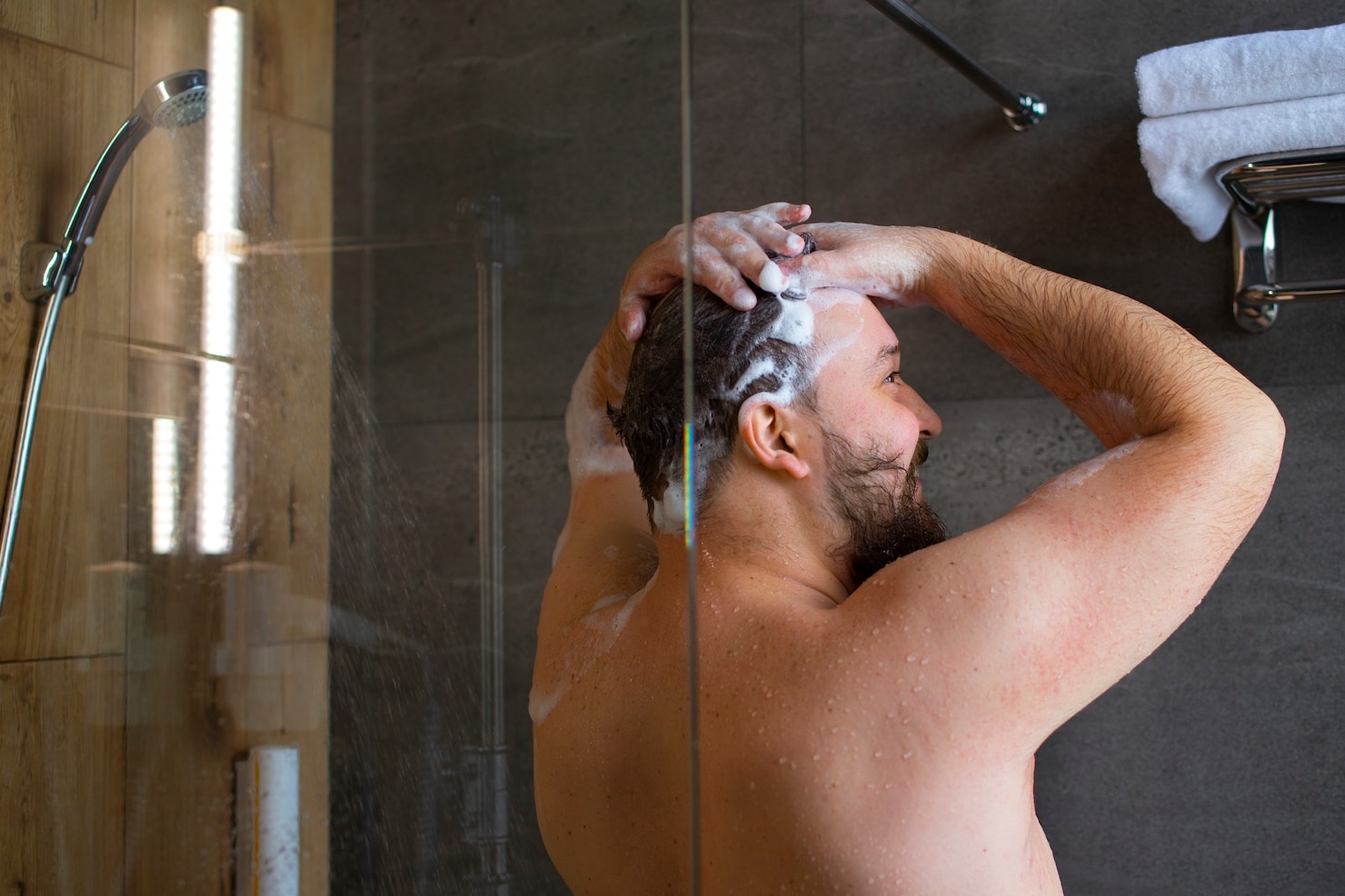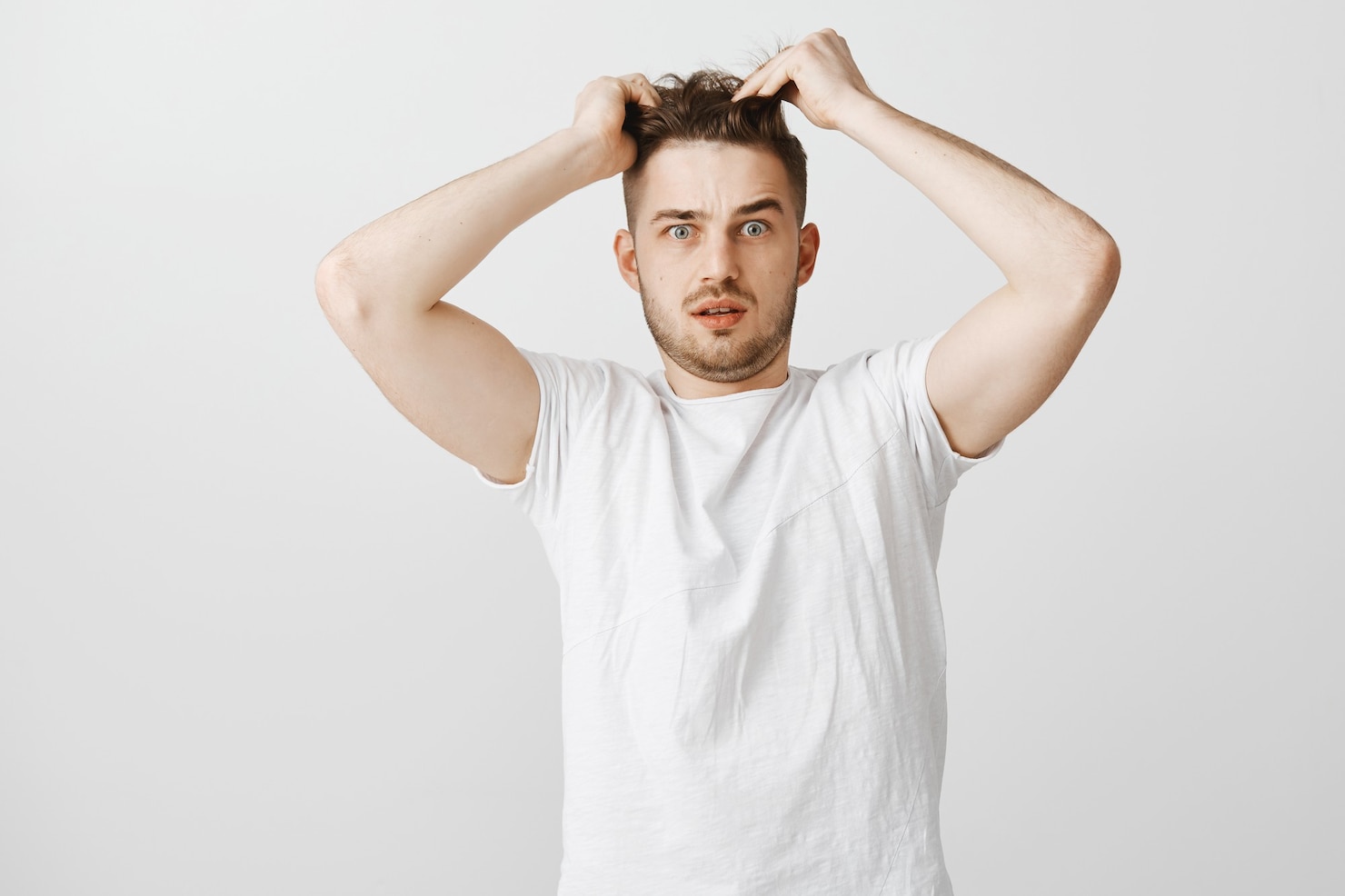
Are you concerned about how much hair loss is normal in the shower? Hair loss is a common issue that affects many men, and understanding its causes and management can be crucial in maintaining a healthy head of hair.
In this comprehensive guide, we delve into the science of hair loss, shedding, and the factors that contribute to these processes. Discover what is considered normal amount of hair loss in shower, how to identify excessive from normal hair loss in shower, and effective methods for managing and preventing hair loss in shower. Let's explore the world of men's hair care together and unlock the secrets to maintaining your locks.
Understanding Hair Loss
What is Hair Loss?
Hair loss refers to the condition where an individual experiences a significant reduction in the amount of hair on their scalp or other parts of the body. It can manifest in various forms, such as thinning hair, receding hairline, or even complete baldness. Hair loss is a common concern for both men and women, and it can have a significant impact on one's self-esteem and overall well-being.
Causes of Hair Loss in Men
In men, hair loss is often attributed to a condition called male pattern baldness or androgenetic alopecia. This type of hair loss is primarily caused by a combination of genetic and hormonal factors. The hormone dihydrotestosterone (DHT) plays a crucial role in male pattern baldness.
In individuals genetically predisposed to this condition, DHT binds to hair follicles, causing them to shrink over time. This results in shorter, thinner, and less visible hair growth until eventually, the affected follicles stop producing hair altogether.
Other common causes of hair loss in men include certain medical conditions, such as alopecia areata, scalp infections, and nutritional deficiencies. Additionally, lifestyle factors like excessive stress, poor diet, smoking, and certain medications can contribute to hair loss.
Key Takeaway:
Understanding hair loss involves recognizing it as a condition characterized by a significant decrease in hair volume on the scalp or body. In men, the primary cause of hair loss is often male pattern baldness, which is influenced by genetic and hormonal factors. While other medical conditions, lifestyle choices, and medications can also contribute to hair loss, male pattern baldness remains the most prevalent cause.Shedding vs. Hair Loss
Differentiating Shedding from Hair Loss
Shedding is a normal part of the hair growth cycle, whereas hair loss refers to a persistent reduction in hair density. Shedding occurs when hair strands reach the end of their growth cycle and naturally fall out to make way for new hair. This shedding process is typically temporary. Hair loss, on the other hand, involves a prolonged disruption in the hair growth cycle, leading to significant hair thinning or bald patches.
Factors that Contribute to Shedding in the Shower
Shedding in the shower is a common occurrence and is often related to the natural hair growth cycle. Factors such as the length of your hair, the frequency of washing, and even the season can influence the amount of hair shed during showering.
As part of the hair growth cycle, a certain percentage of hair follicles enter the resting phase (telogen) at any given time. When you shampoo and rinse your hair, these telogen hairs may be dislodged, resulting in what appears to be excessive shedding in the shower.
Other factors that contribute to shedding in the shower include using harsh hair care products, vigorous scrubbing or brushing, and certain medical conditions like thyroid disorders or nutritional deficiencies. It is important to note that shedding in the shower does not necessarily indicate hair loss or a cause for concern unless there is a significant decrease in overall hair volume over time.
Key Takeaway:
Differentiating shedding from hair loss is crucial in understanding the normal hair growth cycle and identifying potential issues. Shedding is a natural process where old hairs are shed to make way for new growth, while hair loss involves a persistent decrease in hair density.Normal Hair Loss in the Shower

Image Source: FreePik
Average Amount of Hair Loss in the Shower
It is normal to experience a certain amount of hair loss in the shower. On average, individuals can lose anywhere between 50 to 100 hairs per day. This daily hair loss is part of the natural hair growth cycle and should not be a cause for concern.
During showering, the combination of wetting the hair, massaging the scalp, and the mechanical action of washing can cause some hairs that are ready to shed to become dislodged. This can create the impression of significant hair loss, but it is important to remember that it is within the normal range.
Factors that Determine What is Considered Normal
Several factors contribute to what is considered normal hair loss in the shower. The thickness and density of your hair play a role, as individuals with thicker hair may notice more hair in the shower compared to those with finer hair. Additionally, hair length can impact the perception of hair loss, as longer hairs are more noticeable when they shed.
It is important to pay attention to any changes in your hair loss patterns. If you notice a sudden and significant increase in hair loss in the shower, or if you are concerned about your hair density, it is advisable to consult a healthcare professional or a dermatologist for further evaluation.
Key Takeaway:
Normal hair loss in the shower ranges from 50 to 100 hairs per day. Factors such as hair thickness, density, length, age, health, and hormonal changes influence the perception of what is considered normal. Monitoring your hair health and practicing a gentle hair care routine can help maintain healthy hair growth and minimize unnecessary worry about normal hair loss in the shower.Excessive Hair Loss in the Shower
Identifying Excessive Hair Loss
Excessive hair loss in the shower can be identified when there is a significant increase in the amount of hair shed compared to the normal range. You may notice clumps of hair falling out during washing or a visible decrease in hair density over time.
Excessive hair loss can also be accompanied by other symptoms such as scalp itching, redness, or inflammation. If you are concerned about excessive hair loss, it is recommended to seek medical advice from a healthcare professional or a dermatologist.
Possible Reasons for Excessive Hair Loss in the Shower
Several factors can contribute to excessive hair loss in the shower. One common cause is telogen effluvium, a condition where a significant number of hair follicles enter the resting phase prematurely, leading to increased shedding. Telogen effluvium can be triggered by various factors such as significant physical or emotional stress, hormonal changes, nutritional deficiencies, and certain medications.
Other potential reasons for excessive hair loss in the shower include alopecia areata, a condition characterized by patchy hair loss, and certain medical conditions like thyroid disorders or scalp infections. In some cases, excessive hair loss can be a symptom of an underlying health issue that requires medical attention.
If you are experiencing excessive hair loss in the shower, it is important to consult with a healthcare professional to determine the underlying cause and appropriate treatment options.
Key Takeaway:
Identifying excessive hair loss in the shower involves recognizing a significant increase in hair shedding beyond the normal range. Possible reasons for excessive hair loss can include conditions such as telogen effluvium, alopecia areata, underlying health issues, and certain medications. If you suspect excessive hair loss, it is recommended to seek medical advice to determine the underlying cause and receive appropriate treatment. Early intervention can help address the issue and promote healthier hair growth.Managing Hair Loss

Image Source: FreePik
Tips for Preventing Hair Loss in the Shower
Preventing hair loss in the shower involves adopting a gentle hair care routine and implementing healthy lifestyle practices. Here are some tips to help you maintain healthier hair:
- Be Gentle:
Avoid vigorous rubbing or scrubbing of your hair and scalp while shampooing. Instead, use gentle, circular motions to cleanse your scalp and hair. Opt for a mild, sulfate-free shampoo that is suitable for your hair type.- Use Conditioner:
Apply a moisturizing conditioner after shampooing to nourish and protect your hair. Focus on the mid-lengths and ends of your hair, as these areas are prone to dryness and damage.- Avoid Heat and Chemicals:
Minimize the use of heat styling tools such as blow dryers, curling irons, and straighteners, as excessive heat can weaken the hair shaft. Additionally, limit the use of harsh chemicals like hair dyes and relaxers, as they can cause damage and breakage.- Eat a Balanced Diet:
Ensure you have a nutritious diet that includes essential vitamins and minerals for healthy hair growth. Incorporate foods rich in protein, iron, omega-3 fatty acids, and vitamins A, C, and E. Consider including foods like eggs, fish, nuts, leafy greens, and fruits in your meals.- Manage Stress:
Chronic stress can contribute to hair loss. Find healthy ways to manage stress, such as engaging in regular physical exercise, practicing relaxation techniques like meditation or deep breathing, and maintaining a balanced lifestyle.- Consult a Professional:
If you are experiencing significant hair loss or have concerns about your hair density, it is advisable to seek professional advice. A dermatologist or healthcare professional can evaluate your condition and recommend suitable treatment options tailored to your specific needs.In conclusion, preventing hair loss in the shower involves adopting a gentle hair care routine, maintaining a healthy diet, managing stress, and seeking professional guidance when needed. By implementing these tips, you can help promote healthier hair and minimize excessive shedding.


